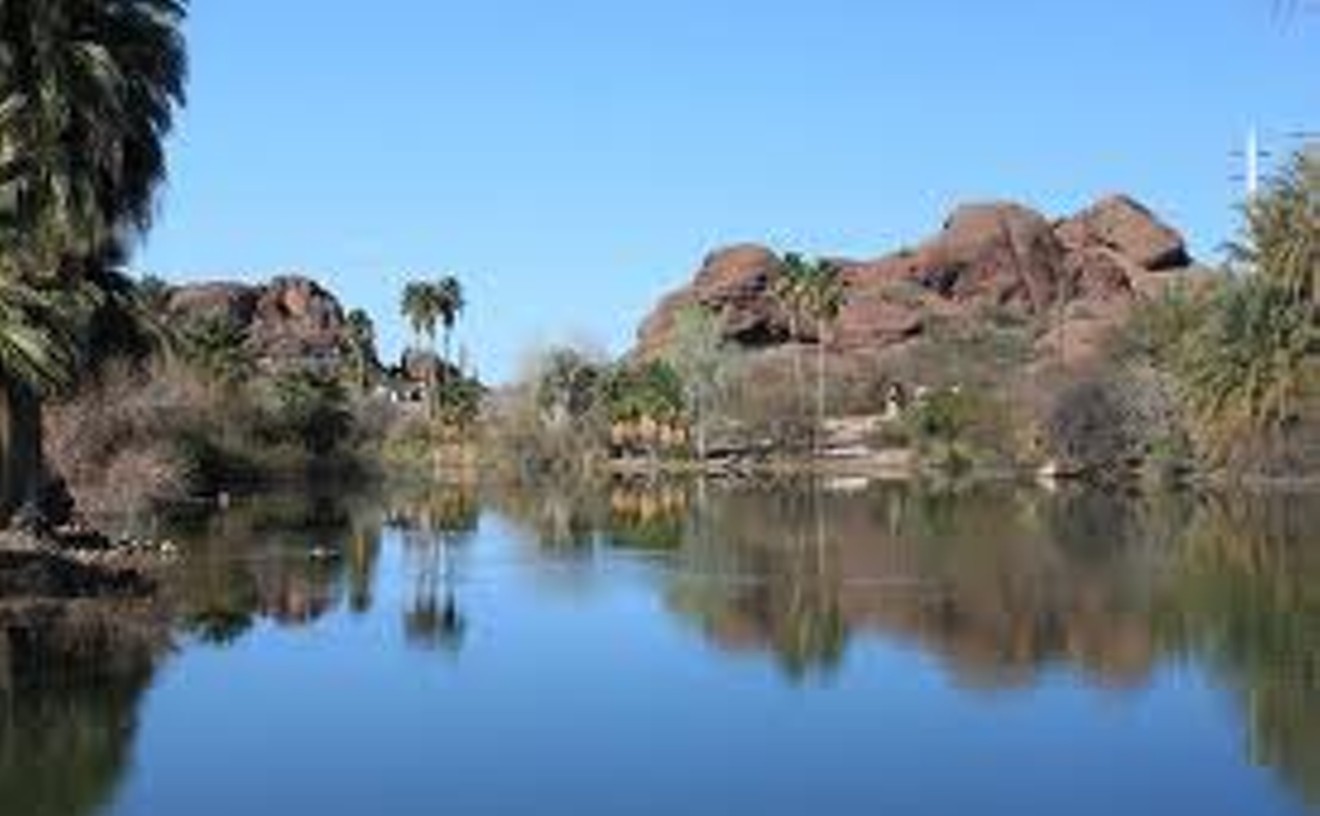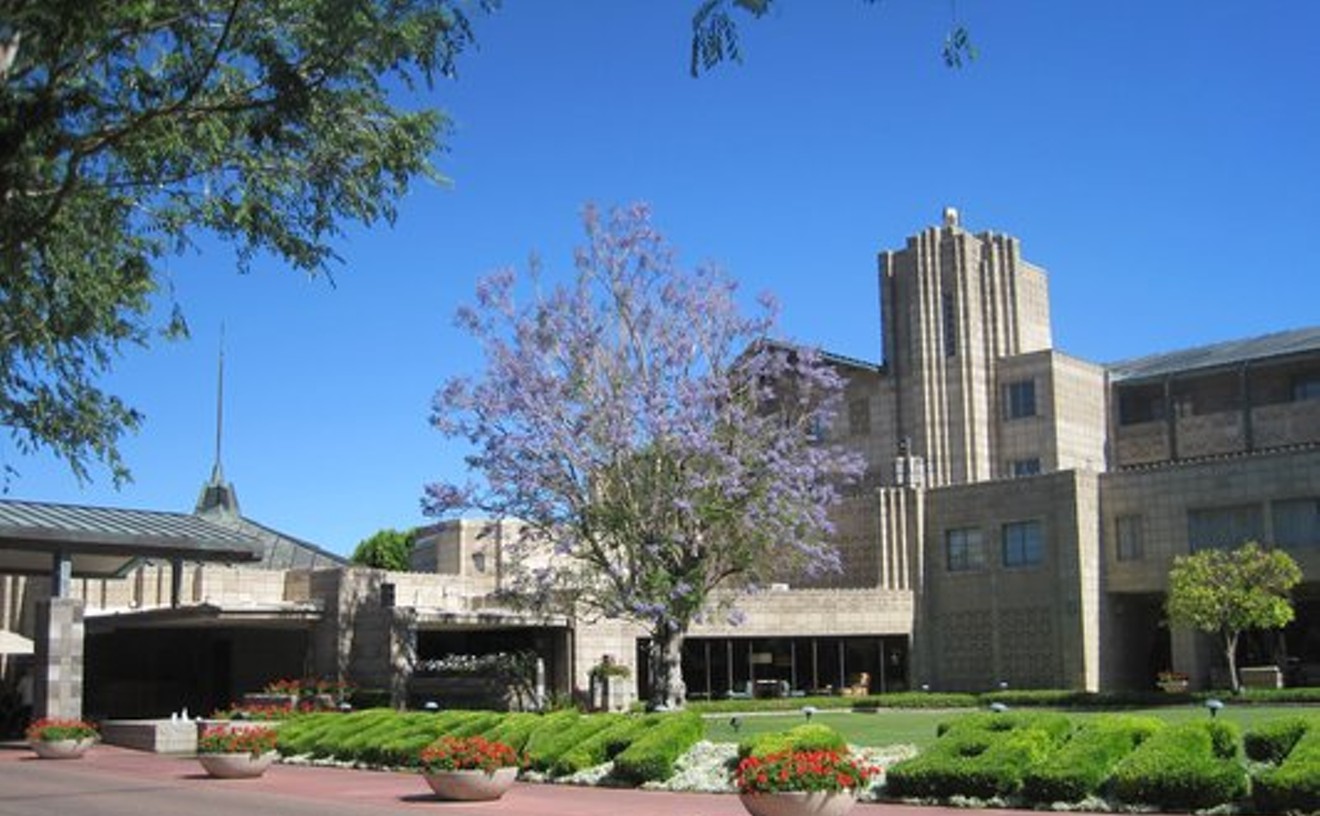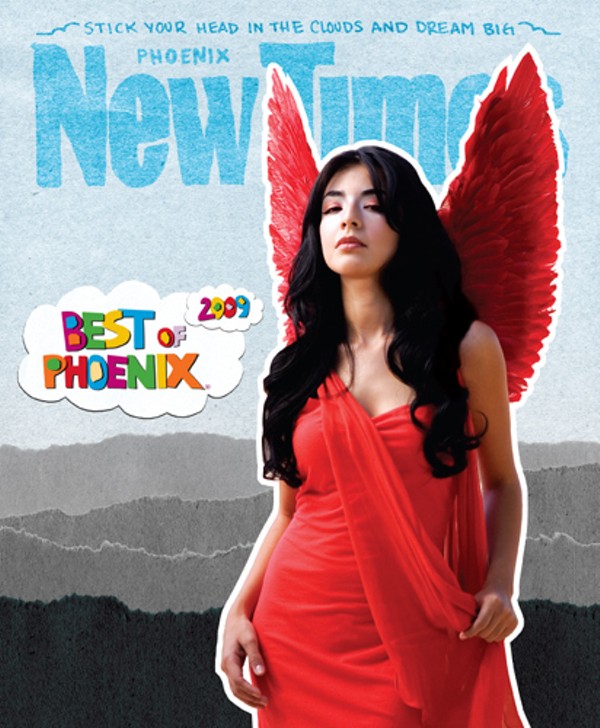Phoenix multi-media artist Angela Ellsworth is always coming up with brand-new ways of making salient points about art, life, culture, societal mores, and just plain stuff. She scored again, big-time, with an eminently memorable live piece performed January 8 in conjunction with her exhibition, "Angela Ellsworth: Underpinnings," at Lisa Sette Gallery.
As a tribute to pioneering female performance artists of the 1960s, '70s, and '80s, Ellsworth dressed rosy-cheeked young ladies, outfitted like "sister wives" of the infamously polygamous Fundamentalist Church of Latter-day Saints, in missionary-style, Mother Hubbard muumuus, frontal hair poufs, long, fake braids, and running shoes. In slow motion, they roamed the gallery that evening, silently miming past performance art while armed with objects — a machine gun, a rag stuffed in a mouth, a flashlight — used in the older, still-controversial works. The flashlight was used to illuminate the crotch of another, reminiscent of Annie Sprinkles' 1989 Public Cervix Announcement, during which the hooker/stripper/porn star turned feminist performance artist invited people to celebrate the female body by using a flashlight and speculum to see her cervix.
God only knows what people passing the gallery during this scenario thought when they got a gander at the goings-on, but it was fun to speculate. We don't think Scottsdale will ever be the same.







